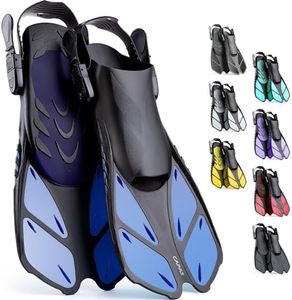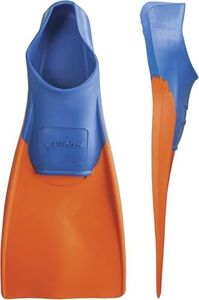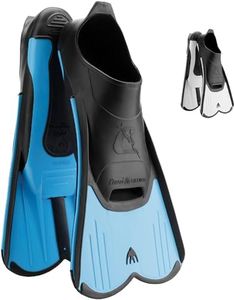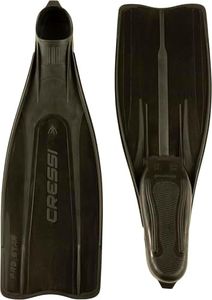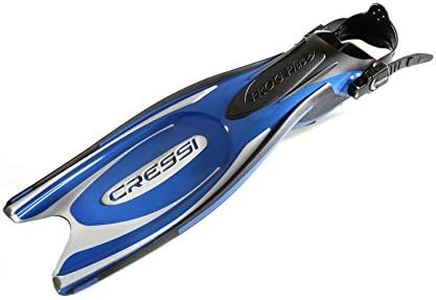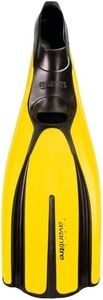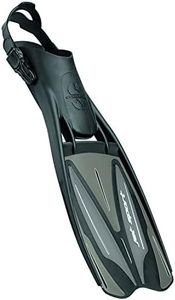We Use CookiesWe use cookies to enhance the security, performance,
functionality and for analytical and promotional activities. By continuing to browse this site you
are agreeing to our privacy policy
10 Best Scuba Dive Fins
From leading brands and best sellers available on the web.Buying Guide for the Best Scuba Dive Fins
Choosing the right scuba dive fins plays a big role in your comfort and efficiency underwater. The perfect pair of fins should help you move smoothly, save energy, and suit your dive style and water conditions. To find your best match, it’s important to pay attention to several key features and think about your swimming ability, leg strength, and the places you’ll be diving. Begin by understanding each key feature and how it influences your experience.Fin Type (Open Heel vs. Full Foot)Fin type refers to how the fin fits onto your foot. Open heel fins have a strap and require dive boots, making them ideal for colder waters or conditions where you might want foot protection from rocks or boats. Full foot fins are like slippers you wear barefoot, and they are better for warm water and easy entries. If you dive in varied conditions or cooler waters, open heel fins offer more flexibility. If you're mostly in warm, clear, sandy spots, full foot fins may feel lighter and more comfortable.
Blade Length and StiffnessBlade length and stiffness determine how much power and effort is needed to move water with each kick. Long and stiff blades create more propulsion and are better for strong currents or deep diving, but require stronger legs. Shorter, more flexible blades are easier on the legs and suit those who dive calmly in gentle conditions or who don’t want to tire quickly. Think about your fitness level and where you’ll be diving: strong swimmers in challenging currents might choose longer, stiffer fins, while recreational divers in calm water usually prefer shorter, softer blades.
MaterialFins are usually made from rubber, plastic, or combinations of both. Rubber fins are heavier but more durable and provide strong thrust, which is great for experienced divers or rough conditions. Plastic fins are lighter and often more flexible, providing comfort but sometimes less power. Pick rubber if you value performance and strength, especially for advanced or technical diving. Choose plastic for lighter travel and comfort, especially if you’re a beginner or mostly dive in easy waters.
WeightThe weight of your fins affects both your swimming and how easy it is to travel with them. Heavier fins can help with stability in the water, especially if you're wearing a thick wetsuit or carrying lots of equipment. Lighter fins are easier to pack and carry, which is great if you travel often for diving. Consider where and how often you travel, as well as your leg strength—frequent travelers or those with less leg strength often prefer lighter fins, while local divers in demanding conditions might not mind a heavier pair.
Foot Pocket ComfortThe foot pocket is the part where your foot sits inside the fin. Comfort here is very important because an uncomfortable fit can cause blisters, cramps, or even ruin your entire dive. Look for foot pockets that fit snugly without pinching and match your foot shape. If possible, try fins on before buying, or carefully check size guides. People with wider or unusually shaped feet should pay close attention to comfort to avoid pain on long dives.
